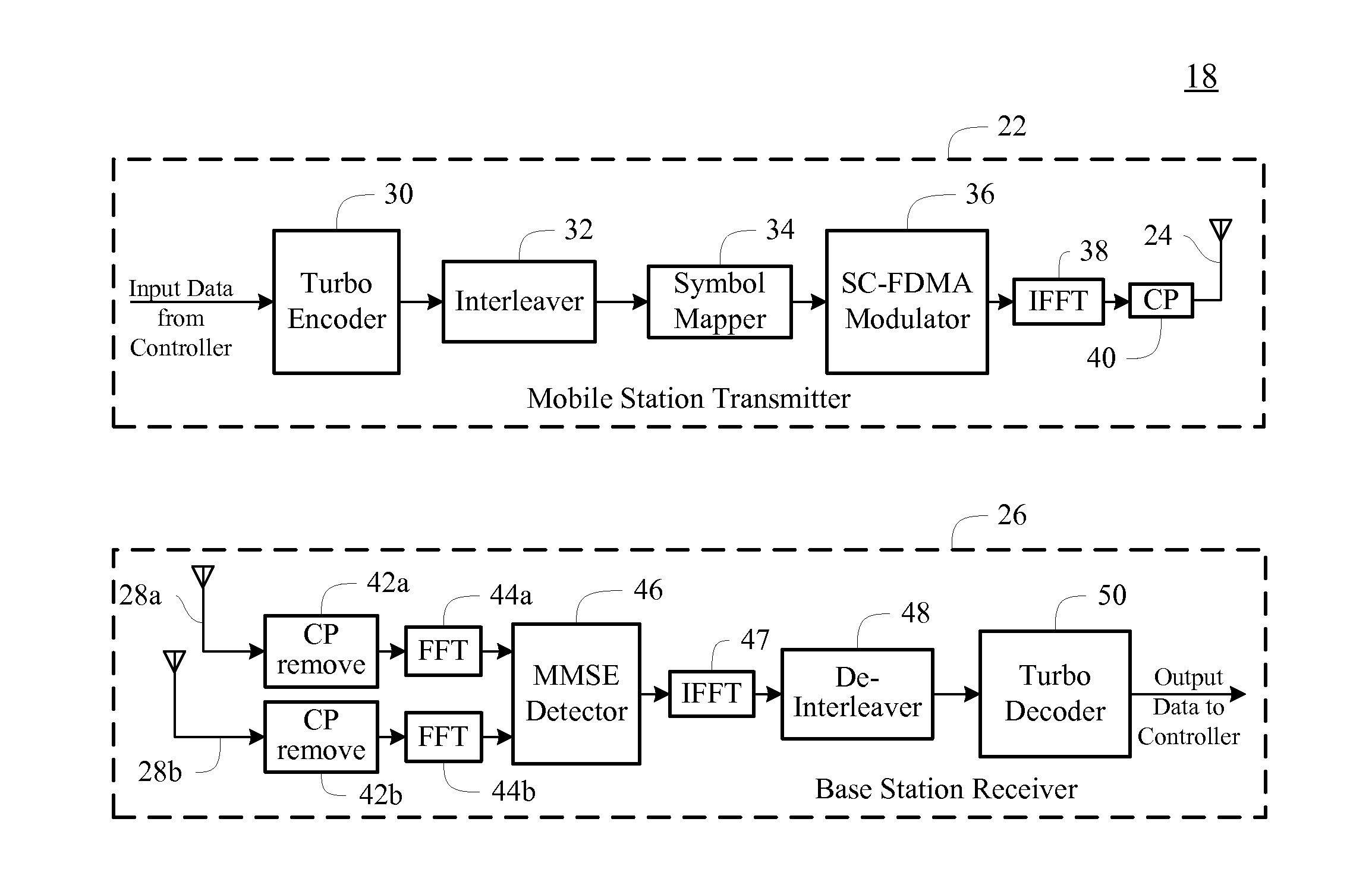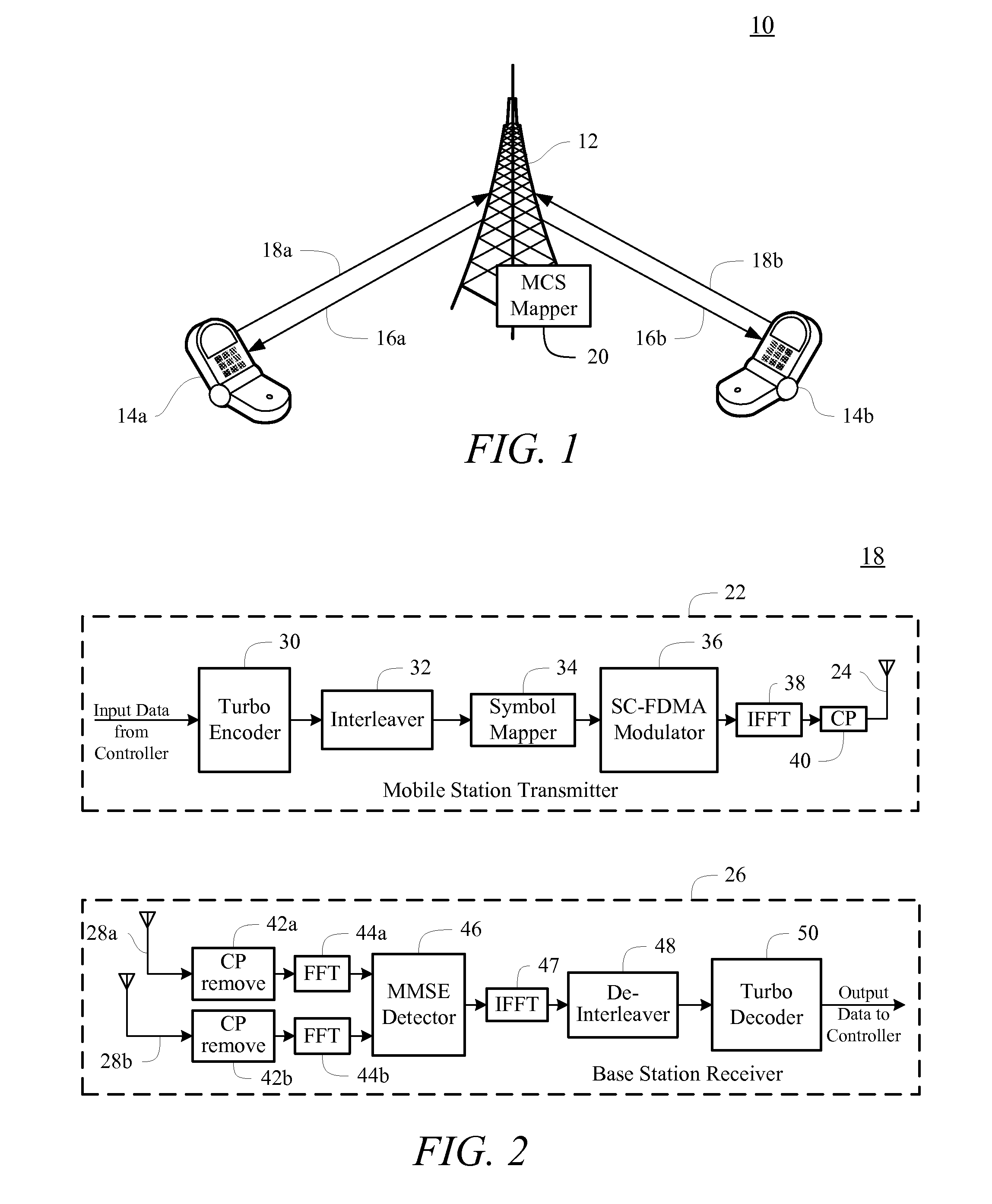Method and apparatus for spectrally efficient link adaptation using HARQ in ofdma systems
- Summary
- Abstract
- Description
- Claims
- Application Information
AI Technical Summary
Benefits of technology
Problems solved by technology
Method used
Image
Examples
Embodiment Construction
[0024]As an initial matter, while certain embodiments are discussed in the context of wireless networks operating in accordance with the 3rd Generation Partnership Project (“3GPP”) evolution, e.g., Long Term Evolution (“LTE”) standard, etc., the invention is not limited in this regard and may be applicable to other broadband networks including those operating in accordance with other orthogonal frequency division multiplexing (“OFDM”)-based systems including WiMAX (IEEE 802.16) and Ultra-Mobile Broadband (“UMB”), etc. Similarly, the present invention is not limited solely to OFDM-based systems and can be implemented in accordance with other system technologies, e.g., code division multiple access (“CDMA”), single carrier frequency division multiple access (“SC-FDMA”), etc.
[0025]Before describing in detail exemplary embodiments that are in accordance with the present invention, it is noted that the embodiments reside primarily in combinations of apparatus components and processing st...
PUM
 Login to View More
Login to View More Abstract
Description
Claims
Application Information
 Login to View More
Login to View More - R&D
- Intellectual Property
- Life Sciences
- Materials
- Tech Scout
- Unparalleled Data Quality
- Higher Quality Content
- 60% Fewer Hallucinations
Browse by: Latest US Patents, China's latest patents, Technical Efficacy Thesaurus, Application Domain, Technology Topic, Popular Technical Reports.
© 2025 PatSnap. All rights reserved.Legal|Privacy policy|Modern Slavery Act Transparency Statement|Sitemap|About US| Contact US: help@patsnap.com



